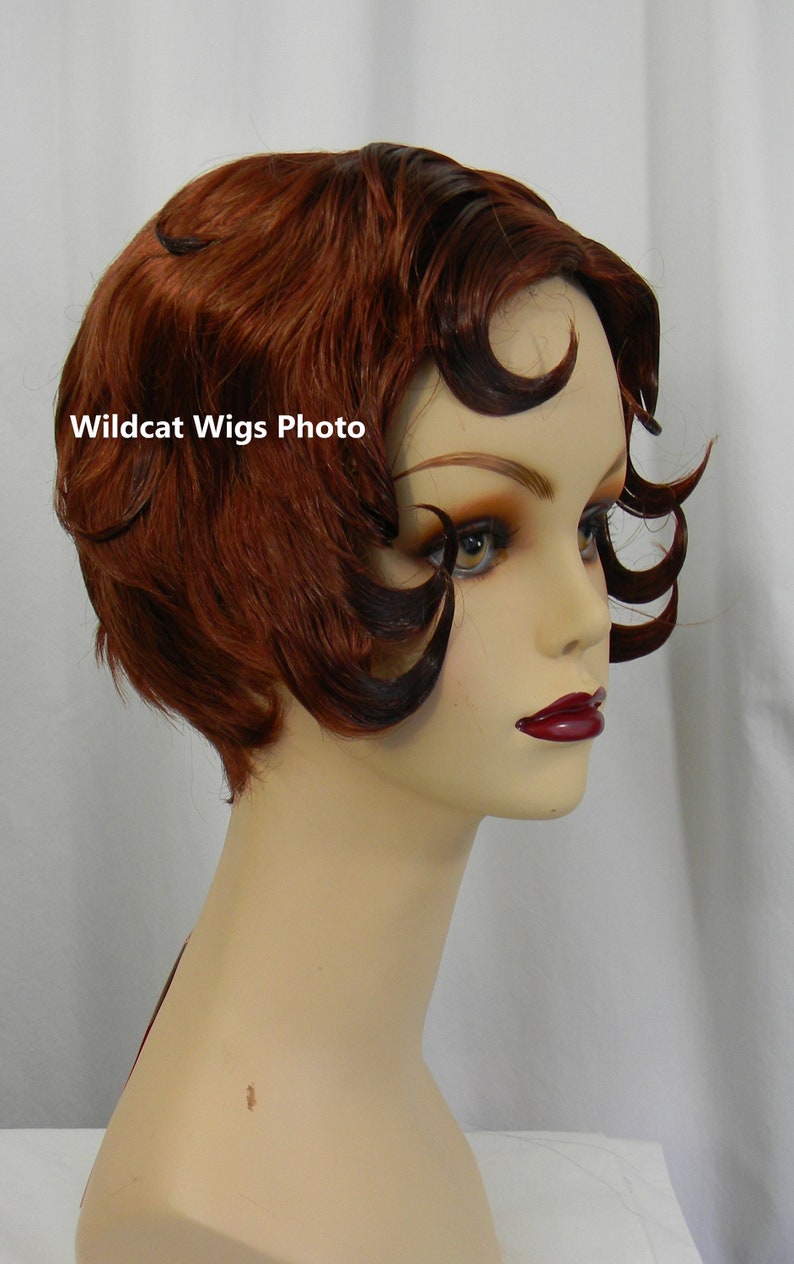
#Betty boop wig code
Despite having been toned down in the mid-1930s as a result of the Hays Code to appear more demure, she became one of the best-known and popular cartoon characters in the world.Ī caricature of a Jazz Age flapper, Betty Boop was described in a 1934 court case as: "combin in appearance the childish with the sophisticated - a large round baby face with big eyes and a nose like a button, framed in a somewhat careful coiffure, with a very small body of which perhaps the leading characteristic is the most self-confident little bust imaginable."īetty Boop is a light-hearted flapper, reminding the audience of the carefree times of the Jazz Age. She has also been featured in comic strips and mass merchandising. She originally appeared in the Talkartoon and Betty Boop film series, which were produced by Fleischer Studios and released by Paramount Pictures. If you want to find out more about Betty Boop then please visit other wikias.īetty Boop is an animated cartoon character created by Max Fleischer, with help from animators including Grim Natwick. Unlike today’s “sexy babies,” Betty Boop never expects the world to coddle her.The page Betty Boop will only contain information about appearances in animated media not any other form, therefore not information about live action or comic book appearances will be noted. And her tenement trill creates a lovely counterpoint to the sophisticated jazz that the Fleischers often used, some by the likes of Cab Calloway and Louis Armstrong.
#Betty boop wig movie
But there’s hard-earned spunk in that childish octave, a good-hearted New York toughness that puts her in a movie lineage defined by Clara Bow and Barbara Stanwyck. It’s a girlish voice, to be sure, somewhere between a chirp and a squawk. She also had the honors when Betty came out of retirement to cameo in “Who Framed Roger Rabbit.” (Claiming that they’d unfairly caricatured her image, the singer-actress brought an unsuccessful lawsuit against Max Fleischer and Paramount, which released the Boop films.)Ī number of performers have provided Betty’s voice, but Mae Questel, the originator, did so more often than any other. Betty Boop wasn’t the first to affect girlish tones, but in her pop-culture visibility she surpassed such real-life predecessors as Helen Kane, who served as a model. She’s a city-bred woman of the people when she runs for president, her opponent is, by contrast, a hat-wearing stick figure named Mr. There’s no sense of entitlement about Betty, who’s at ease mixing it up with all types. In the early short “Minnie the Moocher,” not included in the Olive package, what at first appears to be a yarmulke on her father’s head might instead by a bald spot.īut she is definitely the child of European immigrants, like Max Fleischer, who was a toddler when his family moved from Galicia to New York. Betty herself might be Jewish, although the Fleischers left this matter ambiguous. A number of handy creature-appliances prefigure the Stone Age innovations of “The Flintstones.”Īlong with pop-culture references (Al Jolson, Fanny Brice, Maurice Chevalier), the scripts are lightly peppered with Yiddish.

Rube Goldberg-isms pop up, and mechanical things sprout hands and legs when needed, as when a boat climbs down a waterfall. Betty Boop shorts exemplify his studio’s deft mix of playfulness and surrealism, stripped-down simplicity and loose-limbed exuberance. The roster included Superman, Koko the Clown and Popeye, who made his first screen appearance in a 1933 Betty Boop cartoon.Ī seminal figure in animation, Max Fleischer invented Rotoscoping, a technique for frame-by-frame tracing of live-action footage. And unlike the anthropomorphic critters at Disney, their characters were mainly of the humanoid variety. In the pre-Code days especially, the Fleischer brothers’ output stood apart from their competitors’ by targeting adults. She’s fully domesticated - although, intriguingly, apparently still single.


No more strapless frock and exposed garter.
#Betty boop wig full
Though a number of the selections were made after the Motion Picture Production Code went into effect, only one demonstrates the full impact of the morality guidelines on the free-spirited Betty: In 1937’s “Foxy Hunter,” she’s a supporting player again, while the wholesome adventure of her little boy and puppy claims center stage.


 0 kommentar(er)
0 kommentar(er)
